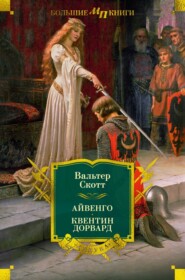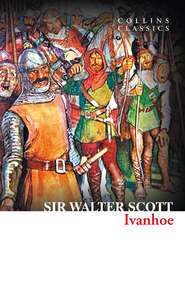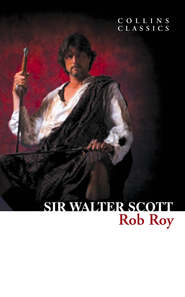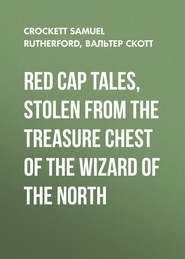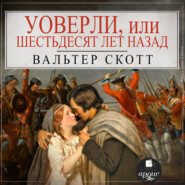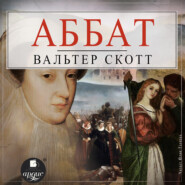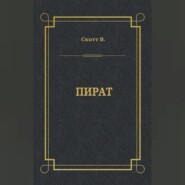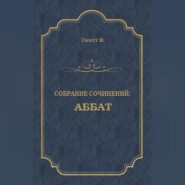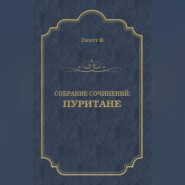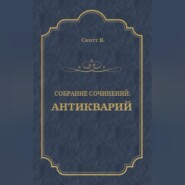По всем вопросам обращайтесь на: info@litportal.ru
(©) 2003-2024.
✖
Rob Roy – Complete
Настройки чтения
Размер шрифта
Высота строк
Поля
“Mr. Kirke was the near relation of Graham of Duchray, the ancestor of the present General Graham Stirling. Shortly after his funeral, he appeared, in the dress in which he had sunk down, to a medical relation of his own, and of Duchray. ‘Go,’ said he to him, ‘to my cousin Duchray, and tell him that I am not dead. I fell down in a swoon, and was carried into Fairyland, where I now am. Tell him, that when he and my friends are assembled at the baptism of my child (for he had left his wife pregnant), I will appear in the room, and that if he throws the knife which he holds in his hand over my head, I will be released and restored to human society.’ The man, it seems, neglected, for some time, to deliver the message. Mr. Kirke appeared to him a second time, threatening to haunt him night and day till he executed his commission, which at length he did. The time of the baptism arrived. They were seated at table; the figure of Mr. Kirke entered, but the Laird of Duchray, by some unaccountable fatality, neglected to perform the prescribed ceremony. Mr. Kirke retired by another door, and was seen no wore. It is firmly believed that he is, at this day, in Fairyland.” – (Sketches of Perthshire, p. 254.)
[The treatise by Robert Kirke, here mentioned, was written in the year 1691, but not printed till 1815.]
Note I. – Clachan of Aberfoil
I do not know how this might stand in Mr. Osbaldistone’s day, but I can assure the reader, whose curiosity may lead him to visit the scenes of these romantic adventures, that the Clachan of Aberfoil now affords a very comfortable little inn. If he chances to be a Scottish antiquary, it will be an additional recommendation to him, that he will find himself in the vicinity of the Rev. Dr. Patrick Grahame, minister of the gospel at Aberfoil, whose urbanity in communicating information on the subject of national antiquities, is scarce exceeded even by the stores of legendary lore which he has accumulated. —Original Note. The respectable clergyman alluded to has been dead for some years. [See note H.]
notes
1
As it maybe necessary, in the present Edition(1829), to speak upon the square, the Author thinks it proper to own, that the communication alluded to is entirely imaginary.
2
Note A. The Grey Stone of MacGregor.
3
Note B. Dugald Ciar Mhor.
4
See Statistcal Account of Scotland, 1st edition, vol. xviii. p. 332. Parish of Kippen.
5
See Appendix, No. I.
6
His courage and affectation of foppery were united, which is less frequently the case, with a spirit of innate modesty. He is thus described in Lord Binning’s satirical verses, entitled “Argyle’s Levee:”
7
Mr. Grahame of Gartmore’s Causes of the Disturbances in the Highlands. See Jamieson’s edition of Burt’s Letters from the North of Scotland, Appendix, vol. ii. p. 348.
8
“At night they arrived at Luss, where they were joined by Sir Humphrey Colquhoun of Luss, and James Grant of Plascander, his son-in-law, followed by forty or fifty stately fellows in their short hose and belted plaids, armed each of them with a well-fixed gun on his shoulder, a strong handsome target, with a sharp-pointed steel of above half an ell in length screwed into the navel of it, on his left arm, a sturdy claymore by his side, and a pistol or two, with a dirk and knife, in his belt.” —Rae’s History of the Rebellion, 4to, p. 287.
9
Note C. The Loch Lomond Expedition.
10
The first of these anecdotes, which brings the highest pitch of civilisation so closely in contact with the half-savage state of society, I have heard told by the late distinguished Dr. Gregory; and the members of his family have had the kindness to collate the story with their recollections and family documents, and furnish the authentic particulars. The second rests on the recollection of an old man, who was present when Rob took French leave of his literary cousin on hearing the drums beat, and communicated the circumstance to Mr. Alexander Forbes, a connection of Dr. Gregory by marriage, who is still alive.
11
The reader will find two original letters of the Duke of Montrose, with that which Mr. Graham of Killearn despatched from his prison-house by the Outlaw’s command, in the Appendix, No. II.
12
About 1792, when the author chanced to pass that way while on a tour through the Highlands, a garrison, consisting of a single veteran, was still maintained at Inversnaid. The venerable warder was reaping his barley croft in all peace and tranquillity and when we asked admittance to repose ourselves, he told us we would find the key of the Fort under the door.
13
Letters from the North of Scotland, vol. ii. pp. 344, 345.
14
Mad herdsmen – a name given to cattle-stealers [properly one who deserves to fill a widdie, or halter].
15
The winds which sweep a wild glen in Badenoch are so called.
16
Appendix, No. III.
17
Such an admission is ascribed to the robber Donald Bean Lean in
18
Some accounts state that Appin himself was Rob Roy’s antagonist on this
occasion. My recollection, from the account of Invernahyle himself, was as
stated in the text. But the period when I received the information is now
so distant, that it is possible I may be mistaken. Invernahyle was rather
of low stature, but very well made, athletic, and an excellent swordsman.
19
This fatal piece was taken from Robin Oig, when he was seized many years afterwards. It remained in possession of the magistrates before whom he was brought for examination, and now makes part of a small collection of arms belonging to the Author. It is a Spanish-barrelled gun, marked with the letters R. M. C., for Robert MacGregor Campbell.
20
Note D. Author’s expedition against the MacLarens.
21
[The treatise by Robert Kirke, here mentioned, was written in the year 1691, but not printed till 1815.]
Note I. – Clachan of Aberfoil
I do not know how this might stand in Mr. Osbaldistone’s day, but I can assure the reader, whose curiosity may lead him to visit the scenes of these romantic adventures, that the Clachan of Aberfoil now affords a very comfortable little inn. If he chances to be a Scottish antiquary, it will be an additional recommendation to him, that he will find himself in the vicinity of the Rev. Dr. Patrick Grahame, minister of the gospel at Aberfoil, whose urbanity in communicating information on the subject of national antiquities, is scarce exceeded even by the stores of legendary lore which he has accumulated. —Original Note. The respectable clergyman alluded to has been dead for some years. [See note H.]
notes
1
As it maybe necessary, in the present Edition(1829), to speak upon the square, the Author thinks it proper to own, that the communication alluded to is entirely imaginary.
2
Note A. The Grey Stone of MacGregor.
3
Note B. Dugald Ciar Mhor.
4
See Statistcal Account of Scotland, 1st edition, vol. xviii. p. 332. Parish of Kippen.
5
See Appendix, No. I.
6
His courage and affectation of foppery were united, which is less frequently the case, with a spirit of innate modesty. He is thus described in Lord Binning’s satirical verses, entitled “Argyle’s Levee:”
7
Mr. Grahame of Gartmore’s Causes of the Disturbances in the Highlands. See Jamieson’s edition of Burt’s Letters from the North of Scotland, Appendix, vol. ii. p. 348.
8
“At night they arrived at Luss, where they were joined by Sir Humphrey Colquhoun of Luss, and James Grant of Plascander, his son-in-law, followed by forty or fifty stately fellows in their short hose and belted plaids, armed each of them with a well-fixed gun on his shoulder, a strong handsome target, with a sharp-pointed steel of above half an ell in length screwed into the navel of it, on his left arm, a sturdy claymore by his side, and a pistol or two, with a dirk and knife, in his belt.” —Rae’s History of the Rebellion, 4to, p. 287.
9
Note C. The Loch Lomond Expedition.
10
The first of these anecdotes, which brings the highest pitch of civilisation so closely in contact with the half-savage state of society, I have heard told by the late distinguished Dr. Gregory; and the members of his family have had the kindness to collate the story with their recollections and family documents, and furnish the authentic particulars. The second rests on the recollection of an old man, who was present when Rob took French leave of his literary cousin on hearing the drums beat, and communicated the circumstance to Mr. Alexander Forbes, a connection of Dr. Gregory by marriage, who is still alive.
11
The reader will find two original letters of the Duke of Montrose, with that which Mr. Graham of Killearn despatched from his prison-house by the Outlaw’s command, in the Appendix, No. II.
12
About 1792, when the author chanced to pass that way while on a tour through the Highlands, a garrison, consisting of a single veteran, was still maintained at Inversnaid. The venerable warder was reaping his barley croft in all peace and tranquillity and when we asked admittance to repose ourselves, he told us we would find the key of the Fort under the door.
13
Letters from the North of Scotland, vol. ii. pp. 344, 345.
14
Mad herdsmen – a name given to cattle-stealers [properly one who deserves to fill a widdie, or halter].
15
The winds which sweep a wild glen in Badenoch are so called.
16
Appendix, No. III.
17
Such an admission is ascribed to the robber Donald Bean Lean in
18
Some accounts state that Appin himself was Rob Roy’s antagonist on this
occasion. My recollection, from the account of Invernahyle himself, was as
stated in the text. But the period when I received the information is now
so distant, that it is possible I may be mistaken. Invernahyle was rather
of low stature, but very well made, athletic, and an excellent swordsman.
19
This fatal piece was taken from Robin Oig, when he was seized many years afterwards. It remained in possession of the magistrates before whom he was brought for examination, and now makes part of a small collection of arms belonging to the Author. It is a Spanish-barrelled gun, marked with the letters R. M. C., for Robert MacGregor Campbell.
20
Note D. Author’s expedition against the MacLarens.
21







